#habetrot
Text
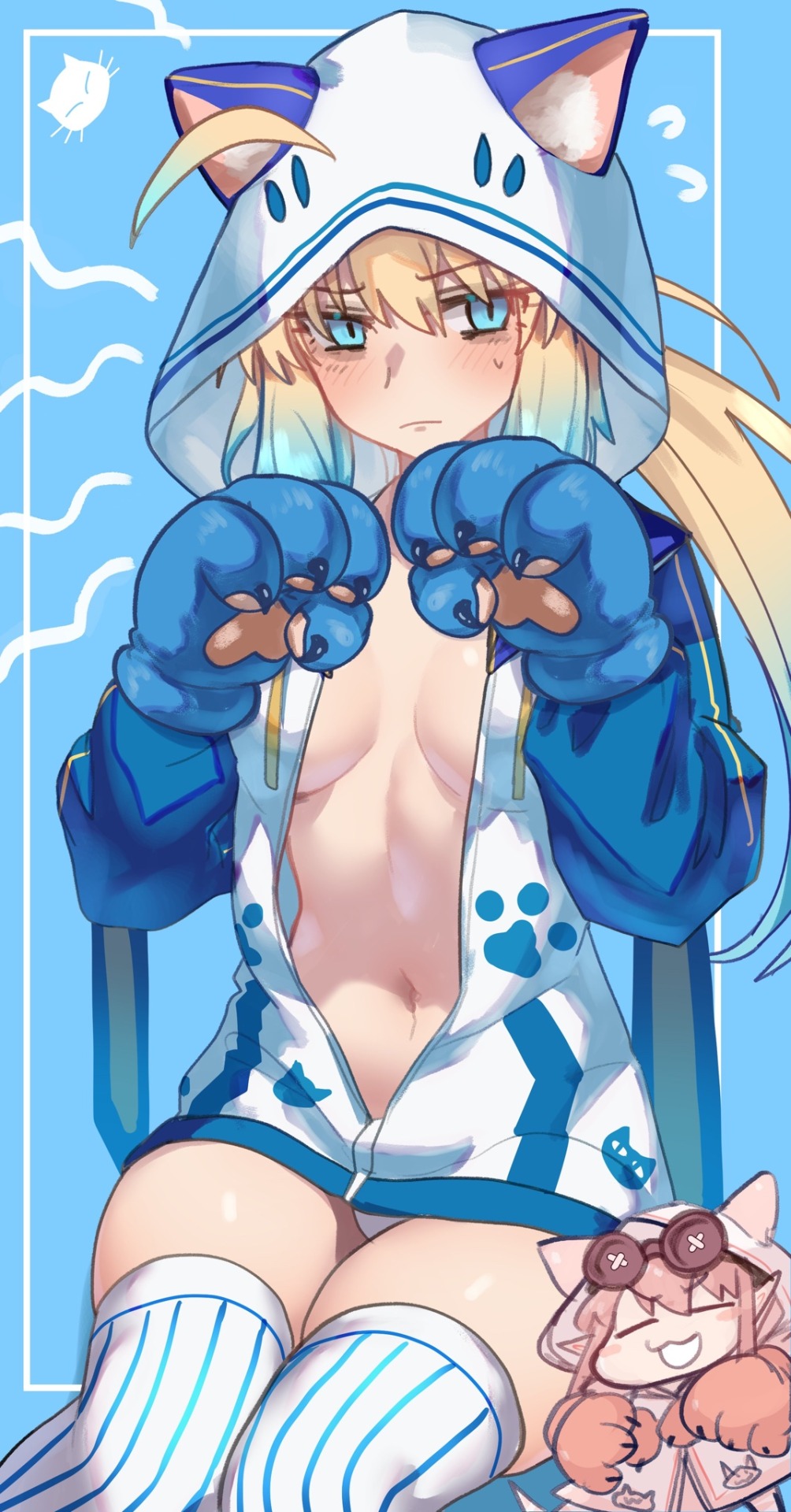
Aesc cat
#fgo#fate grand order#fgo art#lostbelt 6#fate series#castoria#caster artoria#tonelico#aesc the savior#morgan le fay#habetrot#habenyan
2K notes
·
View notes
Text

"Zupa z trupa" // "Corpse soup"
#fgo#fate grand order#cernunnos#castoria#mash kyrielight#habetrot#aurora#cnoc na riabh#melusine#barghest#beryl gut#baobhan sith#morgan le fay#my art#lb6
483 notes
·
View notes
Text

キャストリア \そうだ 牛乳、飲もう。/ by SAIPACo.@saipaco
400 notes
·
View notes
Text

Oldie for the Lostbelt 6 crew
Castoria is technically all of the above but sharing is caring, Castoria
#tomato rambles#shitpost#fate#fate grand order#what even is this image quality tumblr#guess it adds to the vibes#habetrot#baobhan sith#guda#gudako#gudao#fujimaru ritsuka#castoria#artoria caster#morgan le fae#lostbelt morgan#oberon#mash kyrielight#leonardo da vinci#the kid version lol#gordeolf musik#lb6#lostbelt 6 spoilers#kind of??#mash doesn't qualify for the sense of purpose one#because technically she didn't have one at first#oop#don't worry eggplant you're doing just fine
506 notes
·
View notes
Text

i think i forgot to post this. meow meow
356 notes
·
View notes
Note
Habernyan being adorable?

SHE'S EATING YOUR PANCAKE!!!!
154 notes
·
View notes
Text

woe habbycat be upon ye
still image under cut

#fgo habetrot#habetrot#lostbelt 6#fate grand order#fgo fanart#fate#styxart#gif warning#listen man i started off with a doodle but i was like ''hmmm this can be cute'' and i spent hours doing this DJKFHSDJK#the gif looks so crispy on the edges tho :(
293 notes
·
View notes
Text
My British lostbelt doodles
Spoiler warning for all of LB6 below
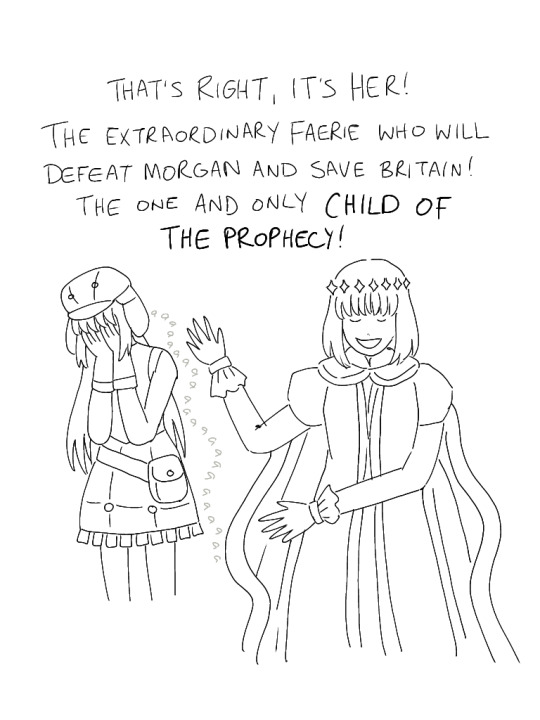
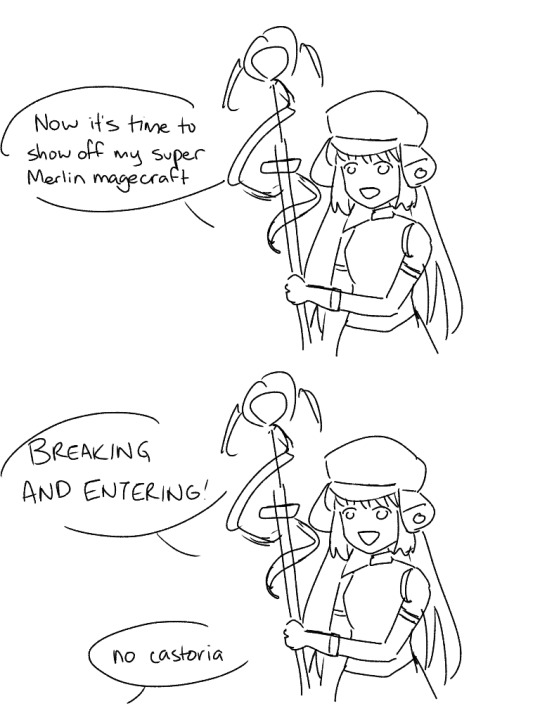
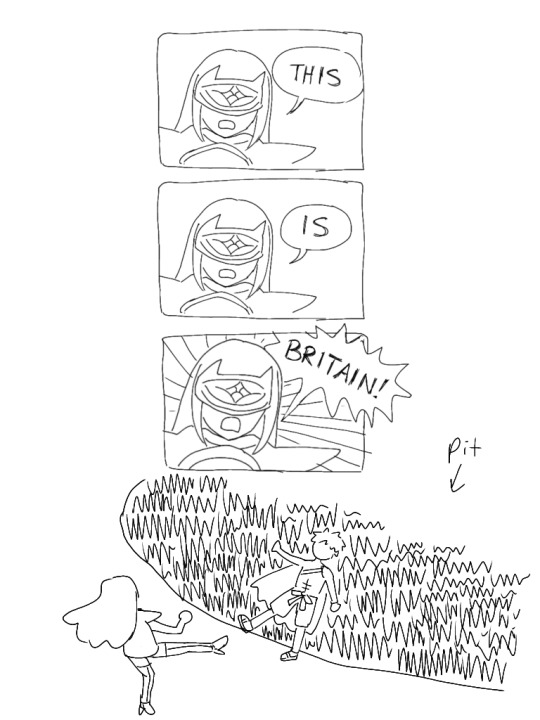

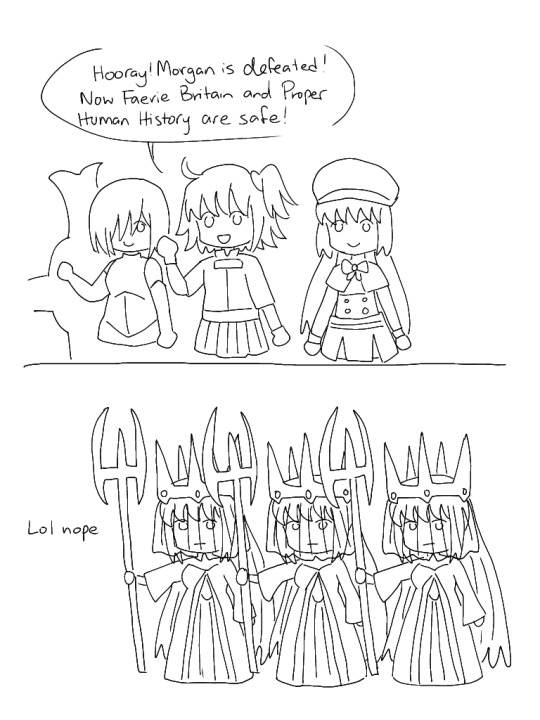





#fgo spoilers#lb6 spoilers#artoria caster#oberon vortigern#tam lin lancelot#melusine#lostbelt 6 spoilers#cernunnos#habetrot
288 notes
·
View notes
Text

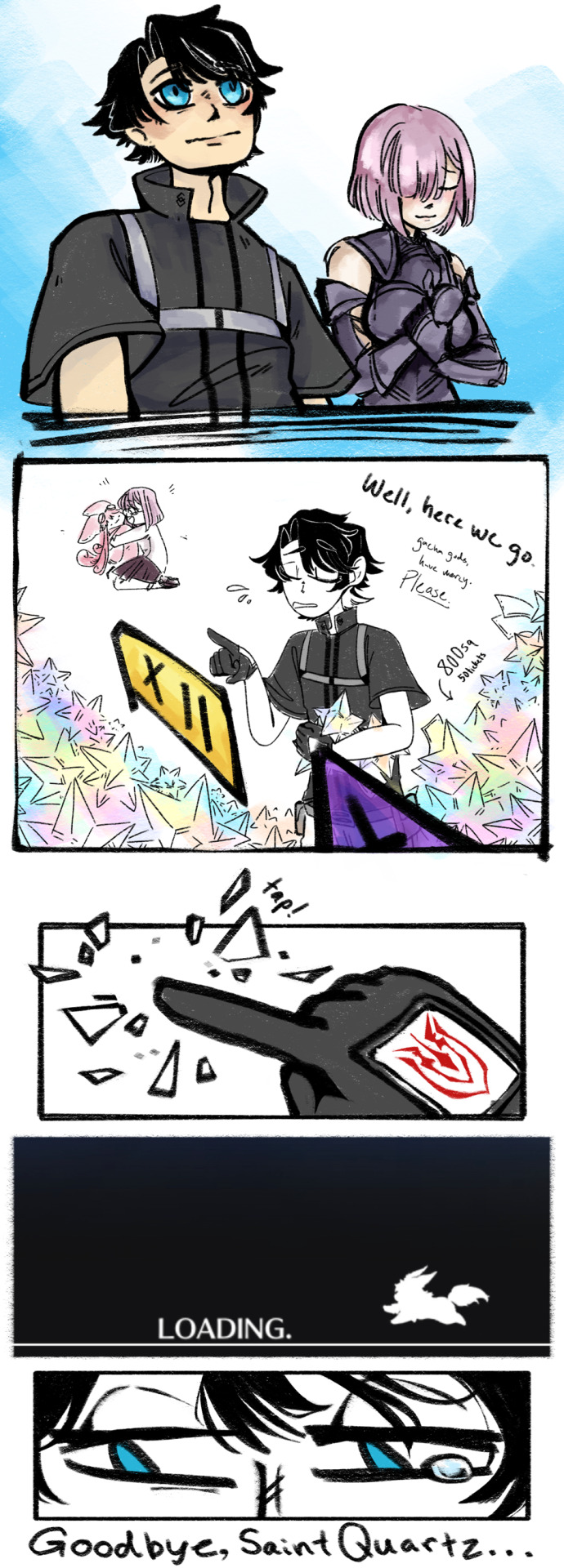
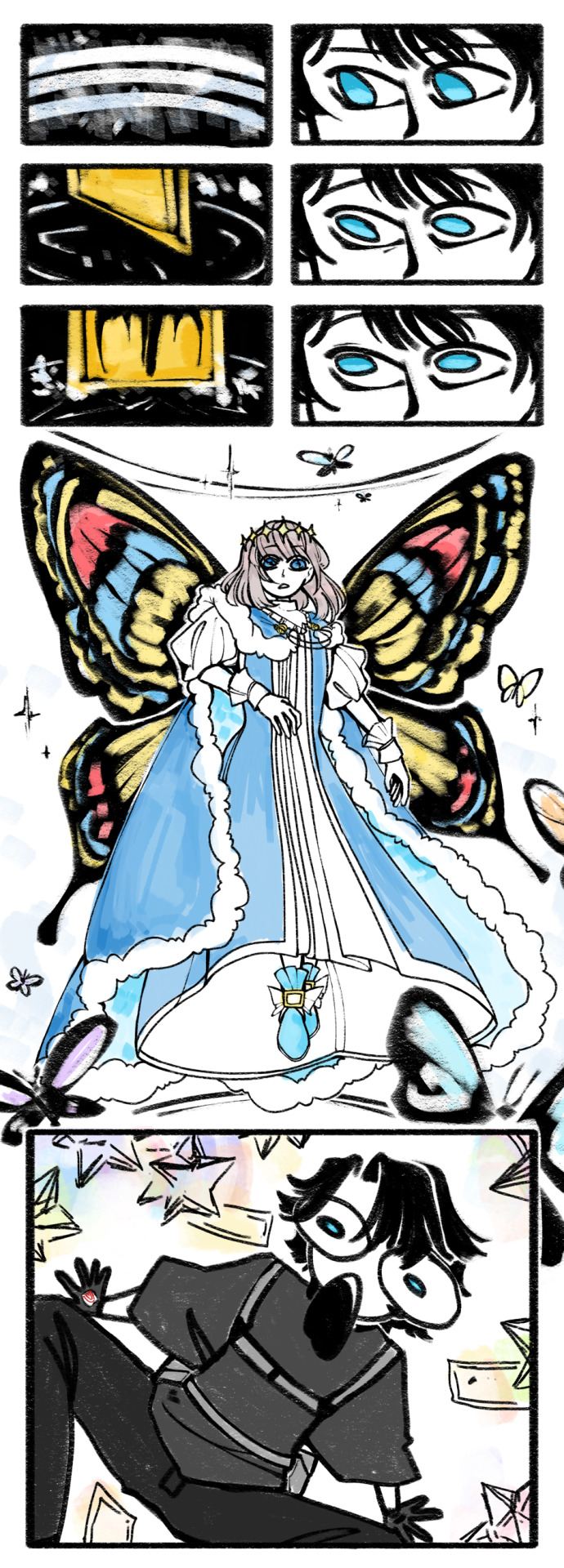

My Oberon Summon Experience, where I kicked him off the Border and he immediately came back in the first 10-pull, the first card
I know this is late (his banner ended like 2 days ago) but this was unbelievable(y funny to my 3 am sleep-deprived brain) so I drew it… and colored it…
Slight spoilers for the end of LB6 and his summon lines, but that can’t be helped :)
I like to think mash and habetrot just looked on like this

#fate go#oberon vortigern#oberon#fate grand order#digital art#my art#lb6 spoilers#ritsuka fujimaru#gacha summons#my luck and sq gone#f2p btw#I saved until pity and the BASTARD.#I can’t really be mad at least he came home#unlike a certain space probe child#still smad about voyager >:/#I gave up shading and coloring half way#it’s like 4 am#habetrot#mash kyrielight
297 notes
·
View notes
Text

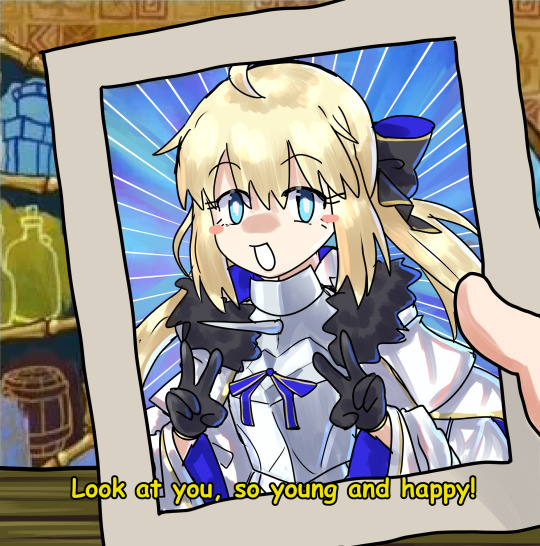

Rough life huh
2K notes
·
View notes
Text
The Fae of the British Lostbelt
This is gonna be a long one, so strap in.
The fae and other creatures of the British Lostbelt take heavy inspiration from real-life legends; almost every major character is named after a type of fairy or mystical creature from British folklore. Many of these names are not English; I've added a pronunciation guide for these in brackets after the word. In this post, I'll go over the beings and concepts these characters are named for and compare the legend to the original. This won't include Morgan or Oberon; those figures are complex enough to deserve posts of their own.
Aesc [ASH]
Aesc is more accurately spelled Æsc. It's an Old English word for the ash tree, and also doubles as the word for the rune for the letter Æ. This is pretty much a direct translation into Old English of Aesc's Japanese name, Tonelico (トネリコ), a word meaning "ash tree".
Albion
Albion is a poetic name for the island of Britain, from Greek Albiōn (Ἀλβίων), the name used by classical geographers to describe an island believed to be Britain. The name probably means "white place", which is how it's connected to the Albion of Fate. The Albion of Fate is the White Dragon, a symbol of the Saxons from a Welsh legend. In the most well-known version of the legend, the King of the Britons at the time, Vortigern, was trying to build a castle on top of a hill in Wales to defend against the invading Saxons, but everything he tried to build collapsed. He was told by his court wizard to find a young boy with no father and sacrifice him atop the hill to alleviate the curse. He sent his soldiers out and found a boy being teased for being fatherless, but when he brought the boy to the hill, the boy, a young Merlin, told him that his court wizard was a fool and that the real reason for the collapsing castle was two dragons inside the hill, one red and one white, locked in battle. The red dragon represented the Britons, and the white dragon represented the Saxons. Merlin told Vortigern that nothing could be built on the hill until the red dragon killed the white one. A red dragon is the symbol of Wales to this day, and a white dragon is occasionally used in Welsh poetry to negatively represent England. This white dragon is Albion in Type/Moon lore.
Baobhan Sìth [bah-VAHN shee]
A baobhan sìth is a female fairy in Scottish folklore. The name literally means "fairy woman" in Scottish Gaelic. They appear as a beautiful woman and seduce hunters traveling late at night so that they can kill and eat them, or drink their blood depending on the story. They're unrelated to banshees except in terms of etymology (Banshee is from Old Irish "ben síde", meaning the same thing as baobhan sìth). They're often depicted with deer hooves instead of feet, which is probably what inspired Baobhan Sìth's love of shoes.
Barghest
In the folklore of Northern England, a barghest is a monstrous black dog with fiery eyes teeth and claws the size of a bear's. The name probably derives from "burh-ghest", or "town-ghost". It was often said to appear as an omen of death, and was followed by the sound of rattling chains. The rattling chains probably inspired Barghest's chains. Her fire powers are also obviously based on the fiery eyes of the barghest. Otherwise, she's not very connected to the folkloric barghest, which is never associated with hunger or eating humans.
Boggart
In English folklore, a boggart is either a malevolent household spirit or a malevolent creature inhabiting a field, a marsh, a hill, a forest clearing, etc. The term is related to the terms bugbear and bogeyman, all originally from Middle English bugge, or possibly Welsh bwg [BOOG] or bwca [BOO-cuh], all words for a goblin-like monster. It usually resembled a satyr. It's not really ever depicted with lion features, so it's anyone's guess why Boggart is a lion-man.
Cernunnos [ker-NOON-ahs]
Cernunnos, probably meaning "horned one", was an important pre-Roman Celtic god. His existence is only attested by fragmentary inscriptions and the repeated motif in Celtic religious art of a "horned god", a humanoid figure with deer antlers seated cross-legged. This fragmentary evidence is often led to assume that Cernunnos was a god of nature, wilderness, animals and fertility. There exists no evidence that Cernunnos was a chief deity of any kind, since we have barely any evidence he existed at all in the first place. Cernunnos might not even be his name; it's just the only name we have. Needless to say, the only thing the Cernunnos in the British Lostbelt has in common with the real figure is his large antlers.
Cnoc na Riabh [kuh-nock-nuh-REE-uh]
Cnoc na Riabh, Knocknarea in English, is a hill in Sligo in Ireland. The name means "hill of the stripes", referring to its striking limestone cliffs. It's said to be the location where Medb's tomb lies, so it's connected to Cnoc na Riabh through Fate's conflation of Medb with Queen Mab, a fairy mentioned in Romeo and Juliet; this etymology of Mab as derived from Medb was formerly accepted, but has lost favour with the advent of modern Celtic studies due to the lack of any concrete connection between the two figures.
Grímr (don't know how to say this one, apologies; Germanic myth is not my strong suit)
Odin (Wōden in Old English) was a god worshiped in many places, basically anywhere the Germanic peoples went, including the Anglo-Saxons that became today's English people. As such a widely worshiped god, he had a very large number of names, titles and epithets. Grímr is one such name, literally meaning "mask", referring to Odin's frequent usage of disguises in myths, which is fitting for how Cú disguised himself as a faerie in the British Lostbelt and hid that he possessed Odin's Divinity from Chaldea.
Habetrot
Habetrot is a figure from Northern England and the Scottish Lowlands, depicted as a disfigured elderly woman who sewed for a living and lived underground with other disfigured spinsters. She often spun wedding gowns for brides. Cloth spun by her was said to have curative and apotropaic properties. All the Habetrot of the British Lostbelt has in common with this figure is the association with brides and with spinning cloth. "Totorot" is not a real figure; the name is just an obvious tweak of Habetrot.
Mélusine
Mélusine is a figure that appears in folklore all across Europe. The name probably derives from Latin "melus", meaning "pleasant". She's a female spirit of water with the body of a beautiful woman from the waist up, and the body of a serpent or a fish from the waist down. In most stories, she falls in love with a human man and bears his children, using magic to conceal her inhuman nature. However, she tells her lover he must never look upon her when she is bathing or giving birth. Of course, he invariably does so, and when he does, he discovers her serpentine lower body, and she leaves, taking their children with her. Since Mélusine is just the name Aurora gave her, the Mélusine of the British Lostbelt has very little to do with this figure, but an analogy can be drawn between the Mélusine of folklore hiding her true form as a half-serpent to maintain her relationship with her lover, and Fate's Mélusine suppressing her true form as both a dragon and an undifferentiated mass of cells to ensure Aurora continues to love her.
Muryan [MUR-yan]
A muryan is a rather obscure Cornish fairy. The word is Cornish for "ant". Muryans are diminutive figures with shapechanging abilities, cursed to grow smaller every time they use those abilities until they eventually vanish altogether. Muryan, of course, is connected to muryans through her ability to shrink others.
Spriggan [SPRID-jan]
A spriggan is a type of creature in Cornish folklore. The word is derived from the Cornish word "spyryjyon" [same pronunciation], the plural of "spyrys", meaning "fairy". They're usually grotesque old men with incredible strength and incredibly malicious dispositions, and are often depicted guarding buried treasure. Spriggan is not himself a faerie, and the name is stolen from a faerie he killed, but it's still appropriate due to the greed and selfishness spriggans are usually depicted with.
Woodwose
Woodwose is a Middle English term for the wild man, a motif in European art comparable to the satyr or faun. The etymology is unclear. It has little to do with wolves or animals, despite its association with wildness, but there is at least a thematic connection with Woodwose's character, since the archetype of the wild man depicts a figure who cannot be civilised or well-mannered no matter how hard he tries, much like how Woodwose barely restrains his temper by being a vegetarian and dressing in a fine suit. Woodwose's predecessor, Wryneck, is named for a type of woodpecker with the ability to rotate its neck almost 180°.
#incoherent rambling#fate grand order#fgo#lostbelt 6#avalon le fae#boggart fate#woodwose fate#habetrot#spriggan fate#muryan#melusine#baobhan sith#cernunnos#barghest#cnoc na riabh#fateposting#if i missed anyone in this post OR in the tags i will jump off a cliff#now it is bedtime#will probably give morgan and oberon their own posts in a few days#school. you know.
308 notes
·
View notes
Text

i made this comment and then thought about it for two seconds
333 notes
·
View notes
Text
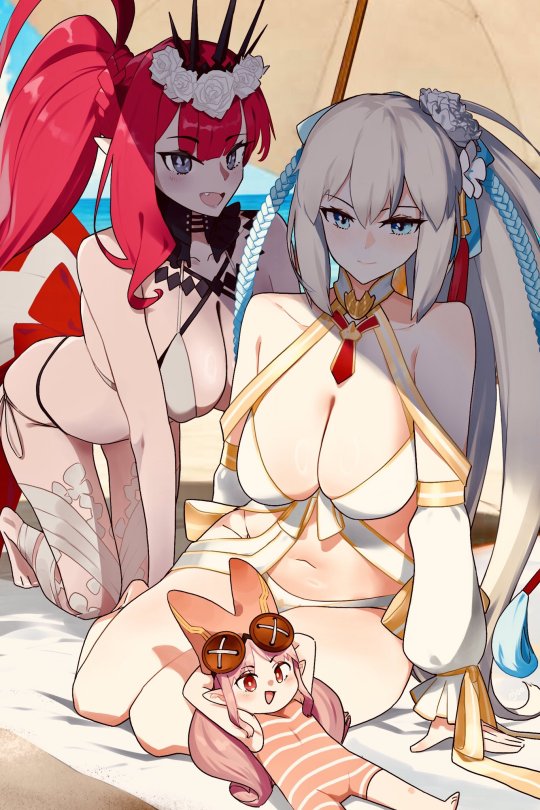
Morgon enjoy the last of summer with her best friend and daughter~ by Monkey Jon @Monkey_Jon007
244 notes
·
View notes
Text

have you reached LB6 yet?
#fgo#fate/grand order#fate grand order#habetrot#artists on tumblr#yehlawd doodle#fate series#vibe check#meme
254 notes
·
View notes
Text

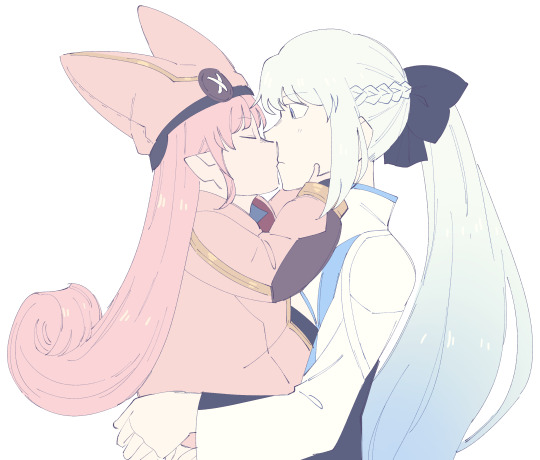

oldish art from when i was playing through avalon la fae i might as well post now. congrats tonelico!!!!!!!!!
#fate#fate grand order#morgan le fay#arthur pendragon#habetrot#setanta#woodwose#ector#oberon#ghost's art#fanart
298 notes
·
View notes
